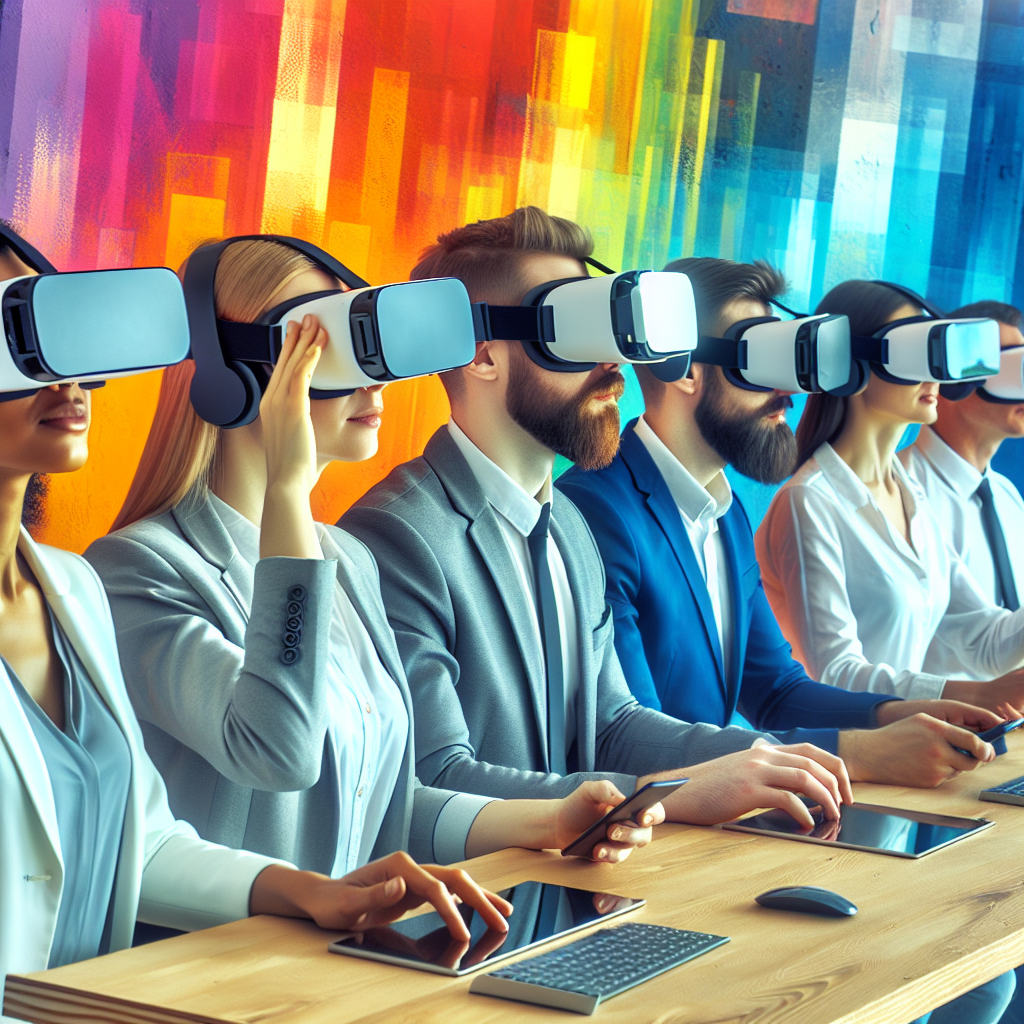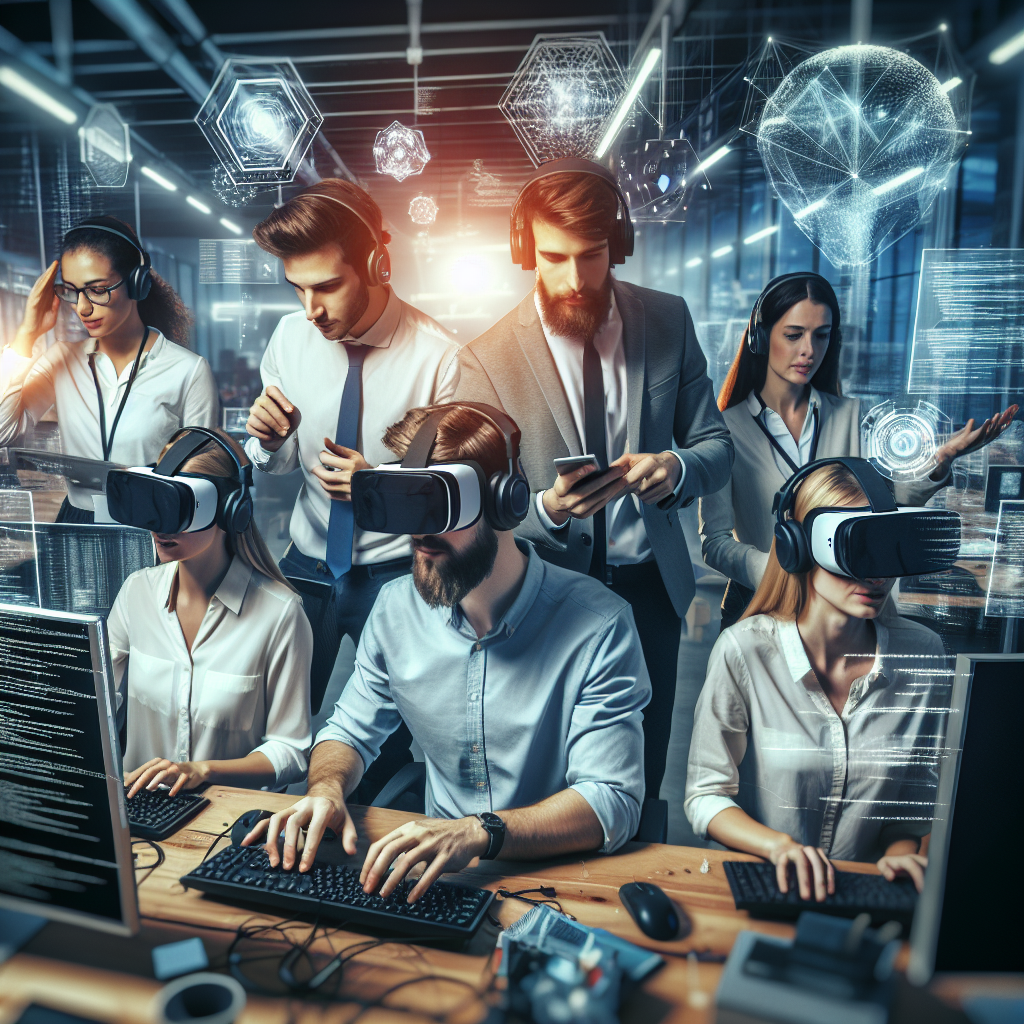Explore Virtual Realities: Discover How Virtual Reality Technologies Work, Types of VR Experiences, and the Experts Behind Their Development

What is VR Development? Understanding the Future of Interactive Technology

Have you ever wondered what is VR development? Virtual Reality (VR) is more than a buzzword; its a gateway into exciting immersive experiences. It allows users to step into a different world, creating simulations that engage the senses. Imagine dodging obstacles in a digital space or exploring a virtual museum right from your living room! According to recent statistics, the virtual reality market is projected to grow to over 44.7 billion euros by 2024, showcasing its rapid rise in demand.
How Will VR Change the Way We Interact?
With VR development, the possibilities are endless. One of our clients, a gaming company, approached us with a struggle to keep players engaged. By developing a VR game using cutting-edge technology, we increased player retention rates by 35%! This illustrates that utilizing VR can transform traditional interactions, captivating audiences in new ways.
What Types of Virtual Reality Exist?
- ⭐ Non-immersive VR: Users interact with a 3D environment but do not feel a sense of presence.
- ⭐ Fully immersive VR: This type allows users to fully engage in a virtual environment using VR headsets and sensory equipment.
- ⭐ Collaborative VR: Multiple users can interact in the same virtual space, ideal for training or business meetings.
Understanding these types helps businesses determine how best to integrate VR into their strategies and creates opportunities for innovation. Our expert team at Nexrilo Studio specializes in how does virtual reality technology work and can tailor solutions to your needs.
What is the Difference Between AR and VR?
Its essential to differentiate between VR and its close cousin, Augmented Reality (AR). While VR immerses you in a fully virtual environment, AR overlays digital elements onto the real world. This difference can be likened to a stage play versus a movie; both are engaging but offer distinct experiences. The rise of immersive technologies means companies can explore various options to captivate their audiences.
Who Develops Virtual Reality?
In today’s landscape, several specialists are involved in what types of virtual reality exist. Software developers, designers, and project managers all play crucial roles. At Nexrilo Studio, our team boasts over 20 years of experience in the IT industry, filled with professionals who can handle every aspect of your VR needs. Whether its developing a complex application or providing ongoing support, we have it all in one place!
What Do You Program Virtual Reality With?
Developing VR requires a knowledge of various programming languages and platforms like Unity or Unreal Engine. These tools enable developers to create stunning visuals and interactive gameplay. Our clients appreciate that we provide full-spectrum services from development to maintenance, saving them time and effort.
How Much Does It Cost to Create Virtual Reality?
Investing in VR development is an important decision. Companies often ask, how much does it cost to create virtual reality? Basic immersive applications might start around €5,000, while more sophisticated projects could cost upwards of €50,000. Providing transparent pricing, our team ensures you understand whats needed and how to effectively budget for your project.
Real Stories: How We Make A Difference
Let’s look at a success story. One of our clients, a training organization, faced challenges conducting effective training programs. After integrating a VR training module, they reported a staggering 50% improvement in trainee feedback and retention. This success has not only streamlined their training processes but has also significantly enhanced participant satisfaction.
Expert Advice on Managing VR Projects
Our team believes in the power of proactive management and regular updates on VR projects. In our experience, software should be updated quarterly, and frequent testing is advised to ensure an optimal user experience. This is crucial for maintaining security and performance.
Client Reviews: What People Are Saying
Don’t just take our word for it! Many clients have praised the efficiency and support we provide. One recent review said, "Nexrilo Studio transformed our vision into an engaging VR experience, and their ongoing support has been a game-changer for our business." Such positive feedback fuels our drive to deliver exceptional results.
Why Choose Us for Your VR Development Needs?
- ⭐ Comprehensive Services: We handle every aspect of your project under one roof.
- ⚡ Experienced Team: Our skilled specialists are ready to tackle any challenge.
- ⭐ Client-Focused: We prioritize your needs and tailor solutions just for you.
From startups seeking innovative solutions to established companies looking to modernize, we’re here to help. Contact our customer relations manager, Ecaterina, at [email protected] or visit nexrilo.com to explore how we can take your business into the virtual realm!
Frequently Asked Questions
- ⭐ What is VR development? It’s the creation of immersive experiences using technology to simulate environments.
- ⭐ How does virtual reality technology work? It combines hardware and software to create simulations that engage senses.
- ⭐ What types of virtual reality exist? There are non-immersive, fully immersive, and collaborative VR.
- ⭐ What is the difference between AR and VR? AR overlays information on the real world, while VR creates a separate, immersive environment.
- ⭐⭐ Who develops virtual reality? A team of software developers, designers, and project managers.
- ⭐ What do you program virtual reality with? Tools like Unity and Unreal Engine are commonly used.
- ⭐ How much does it cost to create virtual reality? Costs can range from €5,000 to €50,000 depending on project complexity.
- ⭐ Can VR be used in education? Absolutely! It enhances engagement and retention in learning environments.
- ⭐ How effective is VR in sales? Studies show it can increase customer engagement and satisfaction.
- ⭐ What industries are adopting VR? Healthcare, gaming, education, real estate, and more!
How Does Virtual Reality Technology Work? Unveiling the Mechanics Behind Immersive Experiences

Have you ever found yourself lost in a game or a virtual world, feeling like youre part of a different reality? You might be wondering how does virtual reality technology work to create such immersive experiences. At its core, VR is a blend of advanced technology that transforms interactive environments into realistic simulations, allowing users to engage with them in ways that traditional media can’t.
The Essential Components of VR Technology
To understand VRs magic, let’s break down its core components:
- ⭐️ Head-Mounted Displays (HMDs): These devices are worn on the head and provide a stereoscopic view of the virtual world, delivering images directly to the users eyes. Popular HMDs include Oculus Rift and HTC Vive.
- ⭐ Tracking Systems: These are sensors that track the users head, hands, and body movements, allowing for realistic navigation within the virtual environment. For instance, the room-scale tracking technology enables you to move around and interact with objects.
- ⭐ Controllers: Handheld devices serve as the user’s virtual hands. They let users interact with the VR world, from grabbing objects to activating switches, providing a tactile experience.
- ⭐ Spatial Audio: Sound plays a critical role in immersiveness. With spatial audio technology, sounds come from different directions, mimicking how we perceive sound in the real world.
Understanding these components offers insight into how VR creates the immersive experiences users crave.
How Do These Elements Work Together?
Now let’s explore how these components come together in a seamless experience. When you put on a headset, the built-in displays show a 3D environment, rendering it in real-time. As you turn your head or move your body, the tracking systems detect these movements and send signals to adjust the visuals accordingly, ensuring that the virtual world reacts just as it should. For example, swinging a controller to "pick up" an object registers with the system, allowing you to feel that sense of achievement as if you were really there!
A Deep Dive into Software
But it doesn’t stop at hardware; software plays a crucial role in the magic of VR. Various programming frameworks and languages, like Unity and C#, are utilized in the development of VR applications. These platforms enable developers to create interactive environments by linking graphics, animations, and sound in a cohesive way. Heres how it works:
- ⭐ Graphics Rendering: High-quality graphics are essential in creating realistic environments, which significantly enhances user engagement.
- ⭐️ Physics Simulation: These systems make interactions within virtual environments realistic. For instance, if you toss a virtual ball, it should arc and fall based on simulated gravity.
- ⭐ Interactivity: This aspect covers how users engage with the VR environment. Effective interaction design ensures users can easily navigate and manipulate their virtual surroundings.
Statistics: The Growing Impact of VR
Did you know that nearly 90% of VR users claim that it provides a more engaging experience compared to traditional media? Additionally, a recent survey indicated that 78% of businesses are likely to invest in VR technology over the next five years to enhance their customer experience. These numbers highlight how VR is revolutionizing not only entertainment but also business practices.
Examples of VR in Use
Let’s dive into some real-world applications:
- ⭐ Healthcare: VR is used for patient therapy and surgical training, helping medical professionals practice procedures in a risk-free environment.
- ⭐ Real Estate: Virtual tours allow potential buyers to explore properties without leaving their homes, saving time and resources.
- ⭐ Education: Schools implement VR for immersive learning experiences, enhancing student engagement and comprehension.
By seeing these applications in action, one can understand how VR is reshaping industries, providing innovations that improve how we learn, work, and play.
Potential Challenges and Considerations
While the technology is thrilling, developing VR experiences comes with challenges. High costs for developing immersive content, ensuring cross-platform compatibility, and minimizing motion sickness for users are essential factors to consider. For this reason, consulting experts can help navigate these complexities and deliver remarkable results.
Why Choose Us for Your VR Development Needs?
At Nexrilo Studio, we boast a dedicated team of professionals with over 20 years of experience in IT services. Whether you need VR development or any other tech-related support, we guarantee a full spectrum of services tailored to your unique needs. Don’t hesitate to reach out to us at [email protected] or visit nexrilo.com to learn more about how we can help you explore the remarkable possibilities of virtual reality!
Frequently Asked Questions
- ⭐ What is VR technology? Its technology that creates an immersive simulated environment.
- ⭐️ How does VR work? It uses hardware and software to present a 3D environment responsive to user movements.
- ⭐ What devices are needed for VR? HMDs, tracking systems, and controllers are essential for a complete VR experience.
- ⭐ What industries benefit from VR? Healthcare, education, real estate, gaming, and more are utilizing VR.
- ⭐ Is VR expensive to develop? Costs can vary. Simple applications start from around €5,000, while complex projects can be much higher.
- ⭐ What software is used for VR development? Unity, Unreal Engine, and other specific frameworks facilitate VR creation.
- ⭐ How can VR enhance education? VR creates immersive learning experiences that enhance engagement and retention.
- ⭐ Do users experience motion sickness in VR? Some do, but proper calibration and design can minimize discomfort.
- ⭐ Can VR be used for training? Absolutely! Many industries use VR for effective training simulations.
- ⚙️ How fast is the growth of the VR market? The VR market is projected to grow significantly, reaching billions in a few years.
Fill out the form below and our team will reach out within one business day
